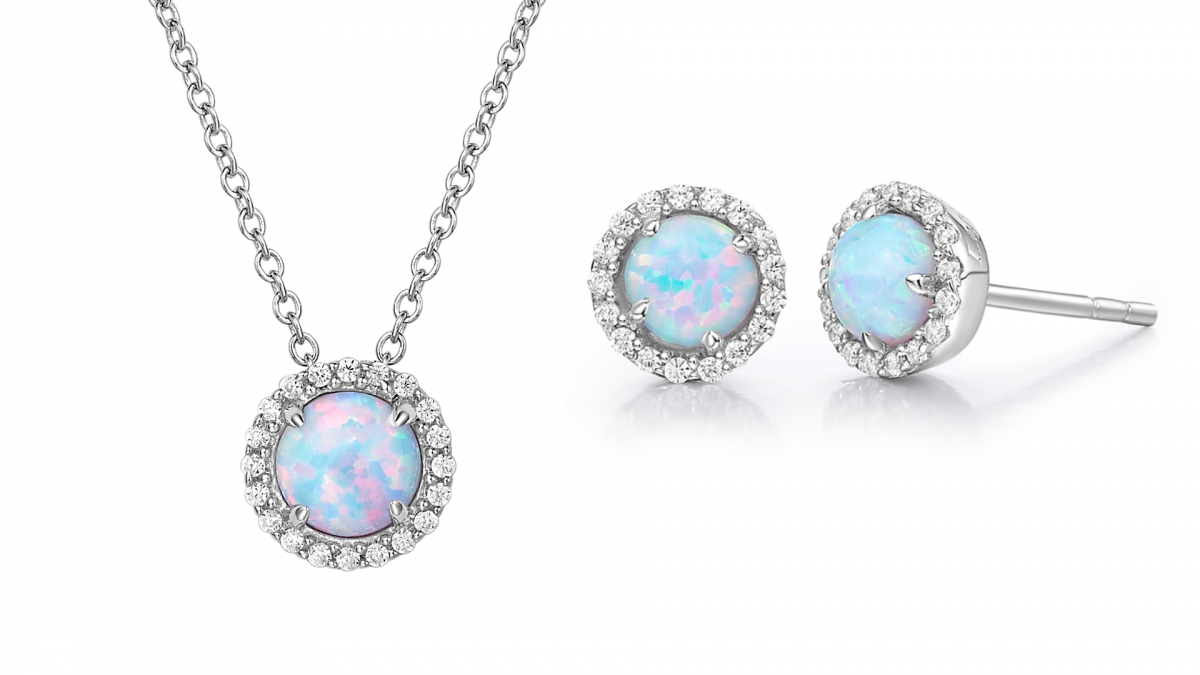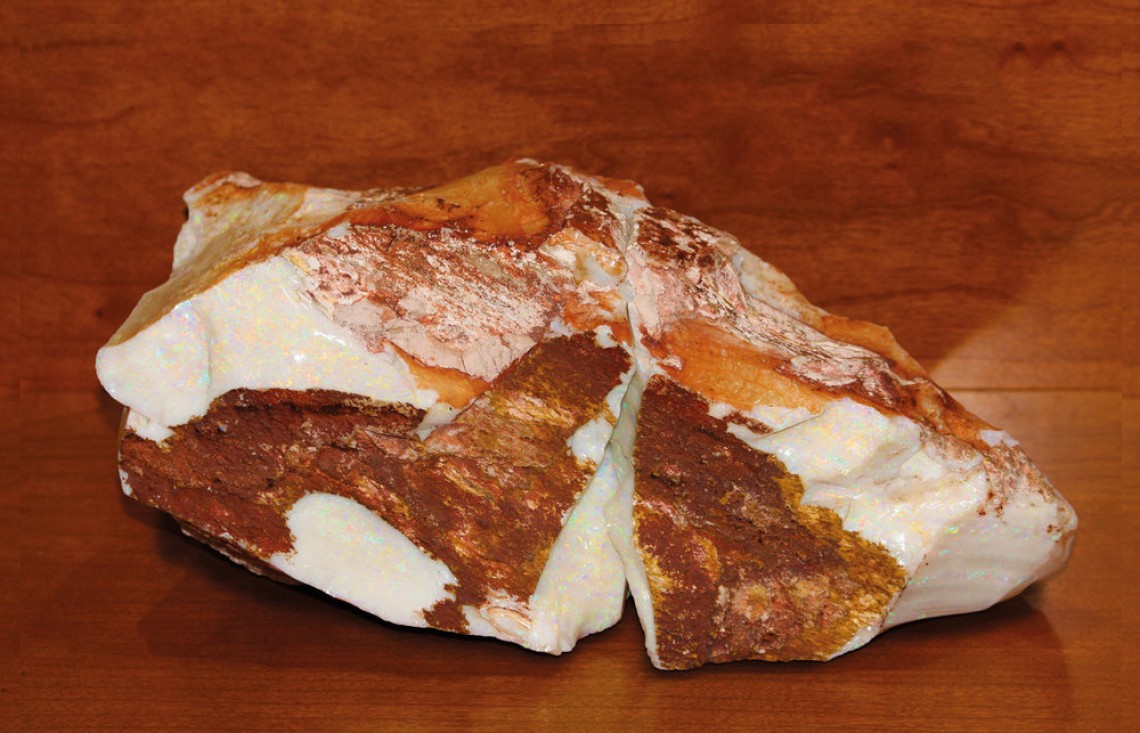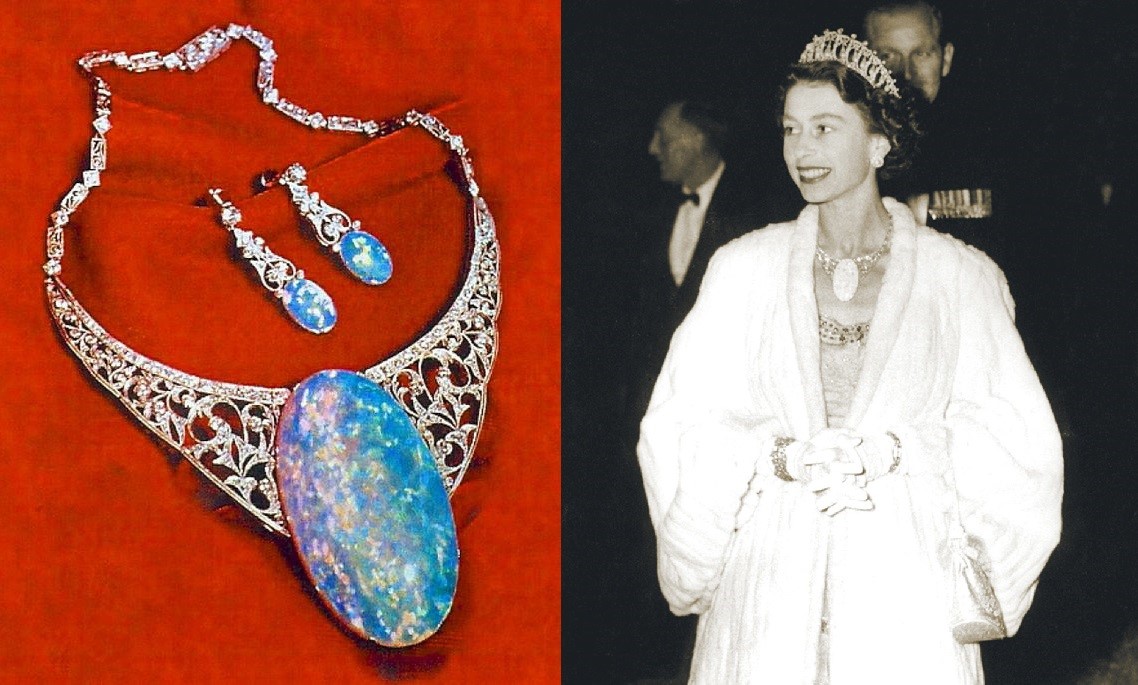
-
LoginToggle My Account Menu
Don't have an account? Sign up now
- WishlistToggle My Wishlist
-
CartToggle Shopping Cart Menu

Opal is most easily recognized by the iridescent shine created by various colors speckled throughout the gem. It is seen as a symbol of faithfulness and confidence and has been used throughout history as a good luck charm or symbol of hope.
And since the early 15th century, opal has been known as the birthstone for October!
Before the 19th century, opal was only mined in Romania, making it a rarity sought after by royalty. Soon after, large opal deposits were found across southern Australia and throughout the world. Today, Australia accounts for over 80% of the world’s precious opal supply.
Opal is categorized into three main groups—precious, common, and fire—each with a range of color and appearance. Precious opals are vibrant, with a unique play-of-color that shows off blue, green and pink clusters within each semi-translucent gem. Common opals are less identifiable, as they are usually more subtle with an opaque, milky look. Fire opals display an iridescent shimmer within red, yellow, and gold translucent gems.
While almost all opal varieties can be found in Australia, certain types have been found to occur naturally in other regions of the world. The Mexican fire opals are unique in that they will often have minimal play-of-color, earning them the nickname, “Jelly Opal.” Alongside Australia, Nevada’s Virgin Valley is one of two locations in the world where black fire opal can be found. Finally, thanks to ancient volcanic ash deposits, white opals mined from the Wollo Province in Ethiopia are often more vibrant than their milky counterparts.

Found in 1956 in Coober Pedy, Australia by the Altmann and Cherny Company, the Olympic Australis is known as the most expensive opal in the world, valued at $2.5 million. The solid opal measures 11-inches long, 4.5-inches tall, with a total weight of 17,000 carats. Today, the Olympic Australis is on display in the Altman and Cherney showroom in Sydney, Australia.

When the Aurora Australis was first lifted from the seabed off the coast of New South Wales, few could anticipate the brilliance that lay beneath its rough, unpolished form. The Altman and Cherny Company purchased the stone, refined it, and realizing its beauty, named it after the aurora borealis that it resembled. Today, the Aurora Australis is known as the world’s most valuable black opal, most recently appraised at just over $71,000.

During her first visit to Australia in 1954, Queen Elizabeth II was gifted the Andamooka Opal by the Australian Government. The Andamooka Opal is said to have been the finest opal ever mined from the Andamooka Opal Fields in Australia, making it a perfect fit for Her Majesty Queen Elizabeth. The Queen received the opal cut and polished as a matching set of cufflinks, earrings and a necklace, all of which can now be seen on display at Buckingham Palace.
Before cleaning your opal jewelry, determine whether you have a solid, doublet or triplet opal. Doublet opals are mounted upon a base to help protect the stone. This base is usually a black opal with greater durability. Triplet opals are usually slices of opal—too fragile to be set on their own—protected between a base and a glass cover. Solid opals will have no backing and no covering.
For solid opals, wash gently with warm water and mild detergent and brush with a toothbrush or soft cloth. For doublet or triplet opals, wipe with a damp cloth and mild detergent. In all cases, avoid harsh chemicals like bleach and avoid automated jewelry cleaners or soaks.